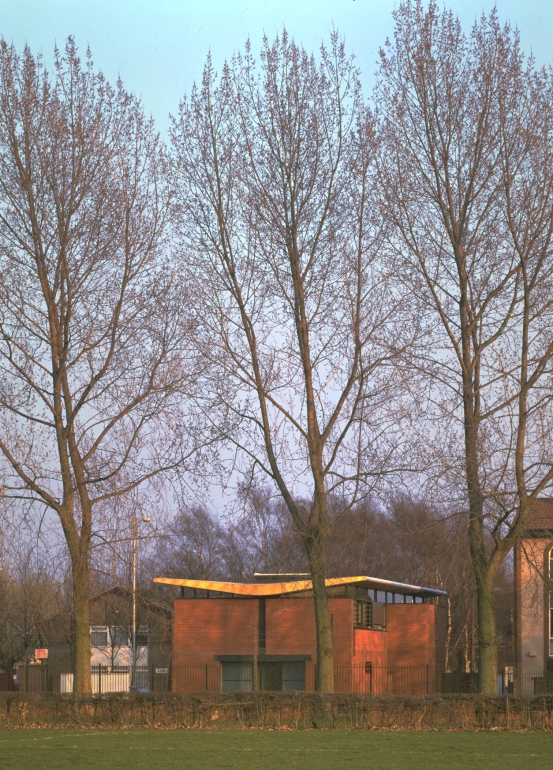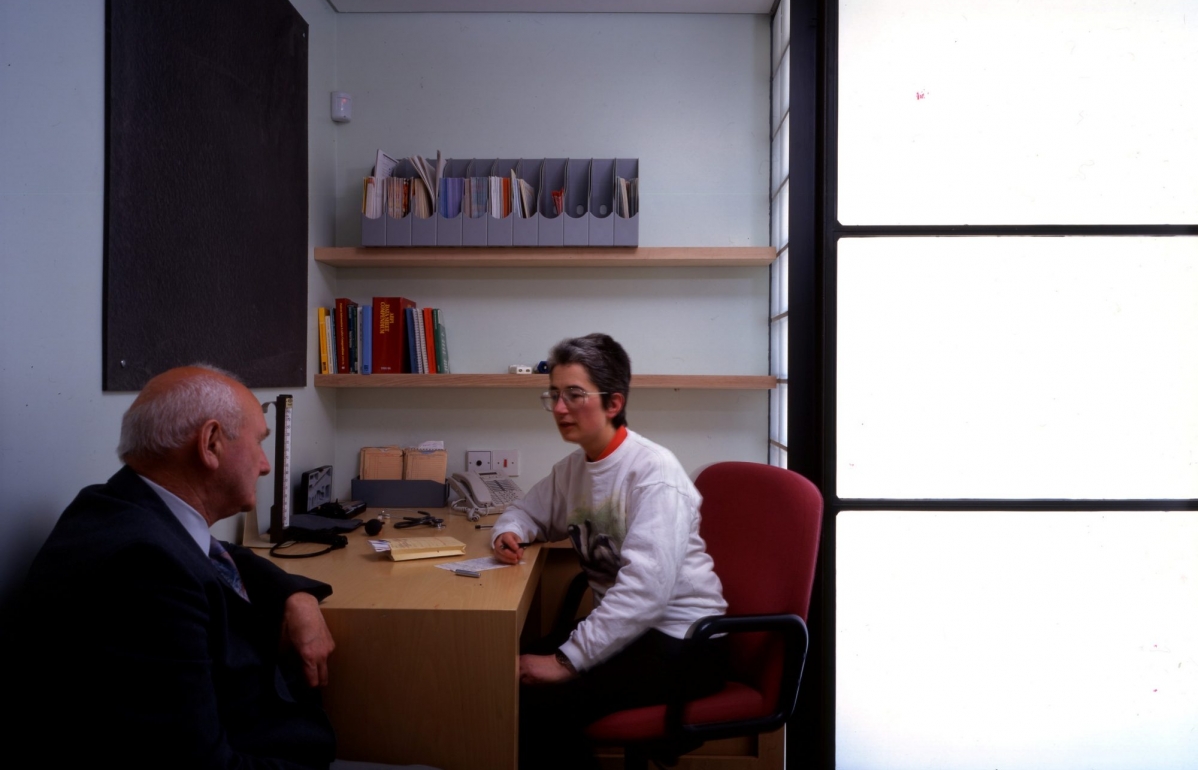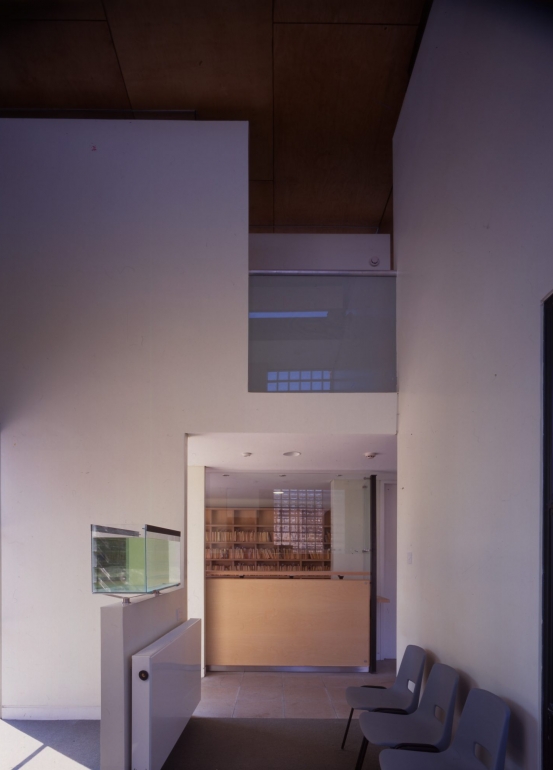Consideration of context is nowhere more compelling than in Hulme. In the 1990s it under went its third generation of re development. This surgery represented a demanding problem as to how a modest building could contribute to a re-stitching of such blighted urban fabric. A series of architectural devices seek to impart an appropriate urban presence. A one and a half storey brick plinth, conceived as a passive security device, increases its apparent scale. The axiality and proportion of the entrance, reinforced by a clear structural expression which engages with the monocoque roof, presents a powerful composition to the street.
Diagrammatically there is a gradation of public through to private space. The public waiting area extends to the underside of the roof, maintaining the visual connection from outside to inside and offering a legibility not only to the building’s form but, via horizontal and vertical oblique views, to the organisation of the building. A central route extends through the layers of the building to the private treatment room and consulting rooms, which are more intimate spaces for confidential interchange and examination.
The architecture contributes and assists the process within the surgery, with natural light permeating the layers and enhancing the calm environment.
“Hodder not only evokes the heady days of English Modernism when progressive notions of health care were supported by an equally progressive architecture, but also extends convincingly the great Mancunian architectural tradition.”
Prof. Peter Fawcett,
The Architects’ Journal,
18 July 1996



